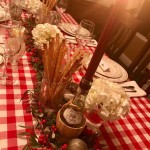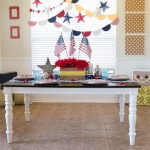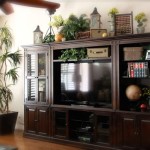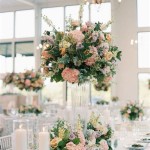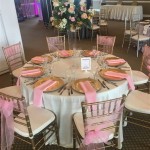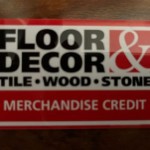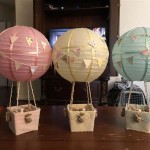How To Use Tulle To Decorate
Tulle, a lightweight netting typically made of nylon, silk, or rayon, is a versatile material widely used in various decorative applications. Its sheer and airy texture lends itself to a range of aesthetics, from whimsical and romantic to elegant and sophisticated. This article will explore several methods for incorporating tulle into decorative schemes, providing practical guidance and highlighting key considerations for achieving optimal results.
The selection of appropriate tulle is paramount. Tulle is available in a spectrum of colors, ranging from classic whites and ivories to vibrant hues. Color choice should align with the overall color palette of the space or event being decorated. Weigh the intensity of the color against the desired ambiance; softer shades create a more subtle effect, while bolder shades offer a more dramatic statement. Furthermore, tulle comes in varying degrees of stiffness. Stiffer tulle holds its shape better for applications requiring structure, such as bows or voluminous arrangements. Softer tulle drapes more fluidly, making it suitable for applications where a flowing effect is desired, such as backdrops or table runners.
Draping Tulle for Backdrops and Ceilings
One of the most impactful ways to utilize tulle is in the creation of backdrops or ceiling decorations. The ethereal quality of tulle can transform a plain space into a visually stunning environment. For backdrops, consider layering multiple layers of tulle to achieve greater opacity and depth. Begin by attaching a support structure, such as a pipe and drape system or a sturdy rod. Secure the tulle to the support using clips, pins, or ties. When draping, manipulate the fabric to create swags, pleats, or other desired patterns. Incorporating lighting behind the tulle can enhance its visual impact, casting soft glows and creating a sense of depth.
When draping tulle from the ceiling, safety is a primary concern. Ensure that the support structure is securely attached to the ceiling and can bear the weight of the tulle. Consider the height of the ceiling and the desired length of the drapes. Longer drapes create a more dramatic effect, while shorter drapes offer a more subtle touch. Similar to backdrops, layering tulle and incorporating lighting can elevate the overall aesthetic. For a more elaborate ceiling design, consider creating a canopy effect by draping tulle from a central point and allowing it to cascade outwards.
The choice of attachment method depends on the surface and the desired level of permanence. For temporary installations, adhesive hooks or removable clips may suffice. For more permanent installations, staples or small nails may be necessary. Exercise caution when using any attachment method to avoid damaging the surface. Remember to account for the weight of the tulle and choose an attachment method that can adequately support it.
Moreover, when working with large quantities of tulle, static electricity can become an issue. Use a static-reducing spray or dryer sheet to minimize static cling and make the material easier to handle. This will also prevent the tulle from attracting dust and debris, keeping it looking clean and pristine. Pre-planning and measuring the space are vital to ensure that you have enough tulle to achieve the desired effect.
Creating Tulle Table Decorations
Tulle can be effectively used to enhance table settings for weddings, parties, and other special events. As table runners, tulle adds an elegant and romantic touch. Simply drape a length of tulle across the center of the table, allowing it to cascade down the sides. Layering tulle over a tablecloth of a different color can create a visually interesting contrast. Securing the tulle at intervals with decorative pins or ribbons can prevent it from shifting during the event.
Tulle is also suitable for creating chair decorations. Tie bows of tulle around the backs of chairs to add a touch of whimsy and sophistication. The color of the tulle should complement the overall color scheme of the event. Consider adding embellishments such as ribbons, flowers, or beads to further enhance the chair decorations. Ensure that the tulle bows are securely attached to the chairs to prevent them from becoming dislodged.
Another application involves wrapping vases or centerpieces with tulle. This can add a soft and textural element to the table setting. Simply wrap a length of tulle around the vase or centerpiece and secure it with a ribbon or glue. Experiment with different colors and textures of tulle to create a variety of effects. Combining tulle with other decorative elements, such as flowers, candles, or crystals, can further enhance the visual appeal of the table setting.
When working with tulle table decorations, it's important to consider the dimensions of the table and the number of guests. Ensure that the table decorations do not obstruct the view of the guests or interfere with their ability to eat and converse. Also, remember function; consider the location of serving dishes and ensure placements are not covered or impinged by the tulle.
Crafting Tulle Embellishments and Accessories
Beyond large-scale decorations, tulle can be employed to create smaller embellishments and accessories. Tulle bows can be used to decorate gifts, wreaths, or other decorative items. Creating tulle flowers is another option, offering a delicate and handcrafted element to any project. These flowers can be used to adorn clothing, accessories, or home decor items. The process involves cutting tulle into circles, layering them, and securing them at the center to create a floral shape.
Tulle skirts or tutus are a popular choice for costumes, dance performances, or children's parties. These skirts are typically made by attaching strips of tulle to an elastic waistband. The length and fullness of the skirt can be adjusted to suit the desired style. Choosing appropriate colors and adding embellishments such as sequins or ribbons can further enhance the look of the skirt.
Creating decorative pom-poms from tulle is a simple and effective way to add a touch of whimsy to any project. Tulle pom-poms can be used to decorate parties, nurseries, or even fashion accessories. The process involves wrapping tulle around a piece of cardboard or a pom-pom maker, then cutting the loops and fluffing the tulle to create a spherical shape.
When creating tulle embellishments, use sharp scissors to ensure clean cuts and prevent fraying. Consider using a fabric stiffener to give the tulle more body and prevent it from losing its shape. Experiment with different colors, textures, and sizes of tulle to create a variety of effects. These smaller uses of tulle can add detail and texture to more comprehensive decorative schemes.
In summary, tulle's versatility makes it a valuable material for a wide array of decorative projects. By carefully considering the type of tulle, the desired aesthetic, and the specific application, decorators can effectively harness its unique properties to create stunning and memorable visual experiences.

Tulle Decorating Ideas Paper Mart Blog

How To Decorate Ceiling With Tulle And Lights

Diy Tulle Pouf Garland Tutorial Style With Erin Furey Martha Stewart

4 Steps To Create A Tulle Backdrop Add Visual Appeal Your Weddin Bbcrafts Com

5 Ways To Decorate With Tulle Happily Frazzled

Tulle Fabric Gallery Decorating With Diy Wedding Decor

What Do You Use To Drape Tulle Around The Cake Table At A Wedding Receptio Great Ideas

Tulle Fabric Gallery Decorating With Diy Wedding Decor

Tutorial Tulle Ball Party Decorations

Tulle Aisle Decorations Step By Diy Wedding Flower Tutorials

